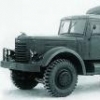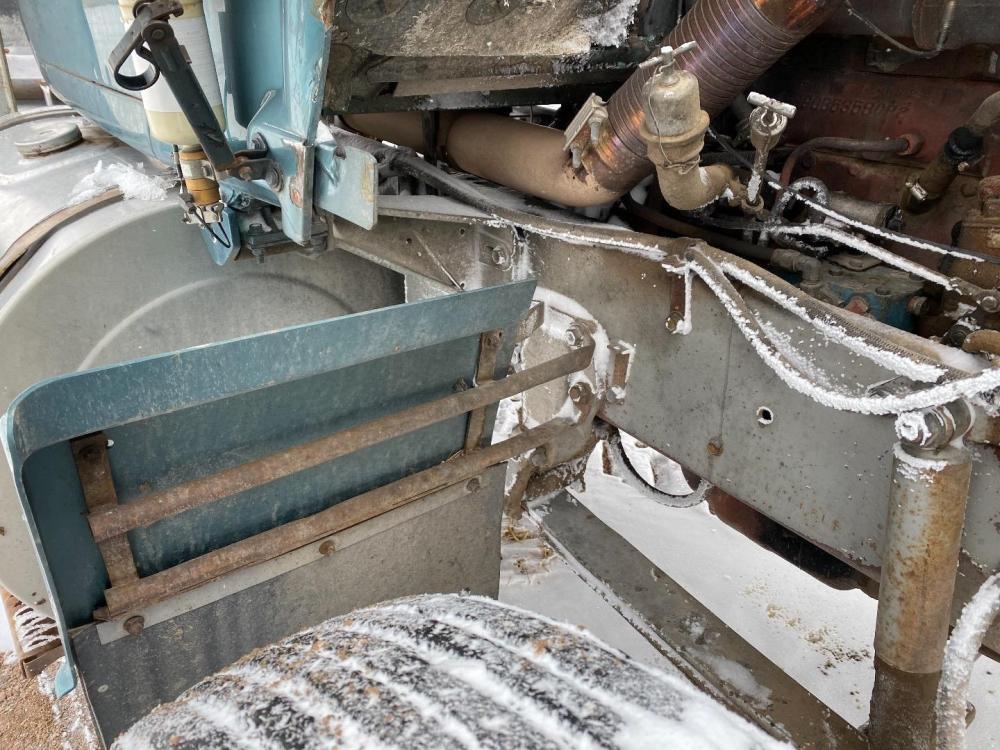-
Posts
7,977 -
Joined
-
Last visited
-
Days Won
78
Content Type
Profiles
Forums
Gallery
Events
Blogs
BMT Wiki
Collections
Store
Everything posted by Vladislav
-

Back in the Mack Pack!
Vladislav replied to BOBWhite's topic in Antique and Classic Mack Trucks General Discussion
You would have to contact the museum. There's on-line decoder but it gives general info only. Something like the production year and possibly an engine option, such as Mack, Cummins, Detroit... I was looking for actual info on my 1988 R688 such as the original engine number etc. Asked a few dealerships in the US (personally) and ended up getting essential info from the Museum guys. -

Back in the Mack Pack!
Vladislav replied to BOBWhite's topic in Antique and Classic Mack Trucks General Discussion
This truck was up for sale about a decade ago. Zoom in the pic and you can see where to look at for the VIN. That's RS600 not RS700 but also Hayward production. And Happy Easter to you! This year this is the same date for both Catholic and Orthodox celebration. -

Back in the Mack Pack!
Vladislav replied to BOBWhite's topic in Antique and Classic Mack Trucks General Discussion
The frame rail is expected to have VIN stamped into RH side near the steer tyre area. But there could be an exception. -

Back in the Mack Pack!
Vladislav replied to BOBWhite's topic in Antique and Classic Mack Trucks General Discussion
Just a question you sure may not answering. If no VIN how can you register the rig? -
Hmm... A question on a side note. What are those brackets attached to the frame rails in the background of the picture? Too look like that extremely seldom seen late style Neway setup.
-

Back in the Mack Pack!
Vladislav replied to BOBWhite's topic in Antique and Classic Mack Trucks General Discussion
Wow! Steel dash! Looks cool, and the steering wheel seems seamless. Wonder could you find any traces of presence of the V8 in the past? -
Exactly as said above! I was just going to ask where that golden frog came from??
-
Almost same matters overhere. Difficult to judge but my guess is 70% of market overall is made in China and 60% of what is marked Made in Russia actually is Chinese components. But I'm afraid the reason is customers. When you see an item for $25 and a similar one for $4 we seldom pay for the 1st one. Sure that $4 thing might be found as crap. But might be Ok too. More and more Chinese goods are quite of good quality. Also high developied country like the US, Germany etc has high taxes which are aimed to support social expenses. So when I pay for a Made in Germany item I understand I pay partially for clean streets in German cities and good quality of medicine overthere. On the other hand it looks to me many high brand companies pretend on getting extremely high wedges for their stuff. I mean when say a certain part for Mercedes-Benz is estimated $250 by Daimler but you can buy THE SAME part from Bosch for $80. I agree MB may have higher responsibility for the product but I don't estimate it for 3 times. 15-20% seems reasonable and I would overpay that amount for 100% official product. But for 3 times higher cost I would try a fortune for cheaper option. Recent case. I wanted a set of A/T tyres for my 4x4. Used to like BF Goodrich in the past and would gladly buy a set. I used to see them offered in $120-150 apiese range in the past in my country. Currently the quote is about $650 for one 285/65R18. Not the way to go for me. And recently I found out a Chinise copy branded Comforcer was sold for $140. I read the net and people's comments were Ok. So I payed nearly $600 for a set of four tyres. Instead of paying the same cash for one piese! They ride fine so far. This doesn't look Ok for a national economy. When you develop local production you 1st involve people in the activity, 2nd you keep your industry in hot condition, 3rd you are strategically independent. But we have what we have and I have no doubt our powers well know what they're doing and for which reasons.
-

Back in the Mack Pack!
Vladislav replied to BOBWhite's topic in Antique and Classic Mack Trucks General Discussion
Cool beasty! RS/RL700's are along my favorites. Congrats on the purchase! -
Looks as a Studebaker wheel to me. At least by the look. Possibly some Diamond-T's had similar style but I'm not sure those were factory. Have no idea on the splines size though. WW2 Mack trucks had wheels similar to the commercial style - L and E-models. But of olive color.
-

Engine ID and spec
Vladislav replied to Licensed to kill's topic in Antique and Classic Mack Trucks General Discussion
You have something wrong with the numbers. If you're looking for the chassis info there should be a VIN of more digits than you posted. And I'm afraid no info on the crane is expected to achive on here. -

Distributor shaft oil lube
Vladislav replied to 609albert's topic in Antique and Classic Mack Trucks General Discussion
I would follow Larry's guess. Engine oil or 80W90 maybe as alternative. The reason is to penetrate that felt to keep some "serive reserve" and supply licky oil to the shaft. So depending on how heavy the stuff is you may need adding a few drops more or less regular. And I belive any modern oil is a few classis higher than oils of the times that engine was designed. So the most every stuff would work. Sure if not kerosine. -

Superliners
Vladislav replied to mackey58's topic in Antique and Classic Mack Trucks General Discussion
RW700 had 3/8" thick rails which were of taller section in relation to RW600's. Those had 1/4" rails. Could have inserts to be doubled though. For engine options 613/713 is Mack, 643 Detroit, 633 Cummins and 653 for Cat. -
Yup, 1991 is more for a E7. E6 has oval side covers on the block at the right side. Those were eliminated on E7. Probably for higher block steadyness for getting more HP and torque possible. E6 has dry liners so seems not much of a chance the coolant gets into the cylinders. E7 has wet liners so possibly indeed.
-
My feeling is studying Farsi is more efficient for brain exercising but I think in your case the book would work. BTW the language it is written in is very reach. Much more complicated reading for me than BMT site.
-

470hp etech leaking rear studs on exhaust
Vladislav replied to Gorilla's topic in Engine and Transmission
For those costs you may purchase a piece of brass hexagonal stock, cut into portions, drill holes and tap threads in them making nuts. I guess that's one day job maximum if you do that yourself. I'm also not sure if brass or copper is hard enough for that application if not it means those nuts are steel copper plated. If so stainless is the way indeed. A care must be taken though since stainless hardware easily catches up together when overtorqued just a little. So grease or another media should be applied on threads for preventing cold weld. And one more point. If you purchase common 18-8 or 316 SS hardware they're not similar strong as grade 8 hardware. It's not stated exactly in characteristics (no standard probably) but as I read somewhere they're close to grade 5 for strength. So could be used in many applications. And if you are not sure SS nuts are strong enough for the exhaust manifold (I don't know) higher or taller SS nuts might be found. -
Of what I noted for other Mack engines (of the era) bearing shells have numbers stamped for each shell. And the numbers are usually different due to one shell may have a hole and the other wouldn't. But what I was going to note parts list point a number for a two shells set. And that number doesn't duplicate any of the shell numbers.
-
Wow! Randy, friend... I see Hellertown courses of Russian are doing better than my Farsi exersizes, fine! The only point I'm Vladislav not Vladimir. Vladimir... is another guy Winfall women are very appretiated
-
Many thanks folks! Nice to hear so many friendly voices! Had relatively common day since it was in the middle of a week, Visited my parents on the day after (today). And going to party on the weekend a little. Funny and uncommon thing we got good amount of snow in the last couple of days after about a week of nearly T-shirt weather. So not the perfect time for barbecuing too.
-

Roger's Trailer
Vladislav replied to blackdog2's topic in Antique and Classic Mack Trucks General Discussion
Mabe that was something not really heavy? -
Something was cut "a bit" more than that could be. What doesn't really surprize in an old truck. And putting two brake disks is an improvement. Since you have two sets of internal pins in action as the result. I also noted that the intermediate plate which you fit between two clutch disks I had in my truck was notably thinner than one in a used clutch set I bought ocassionally. Very notable difference, something like 9/16 compared to 3/4. Would hardly influence the pressure plate adjustment position and clutch brake travel.
-

1953 Mack LJ
Vladislav replied to reb87's topic in Antique and Classic Mack Trucks General Discussion
Yes, factory parts.
BigMackTrucks.com
BigMackTrucks.com is a support forum for antique, classic and modern Mack Trucks! The forum is owned and maintained by Watt's Truck Center, Inc. an independent, full service Mack dealer. The forums are not affiliated with Mack Trucks, Inc.
Our Vendors and Advertisers
Thank you for your support!






